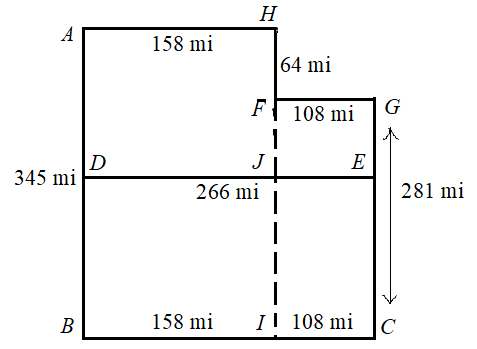The borders of the state of Utah have approximately the lengths shown on the map. The United States Department of the Census projects that Utah will have a population of 2,990,094 in the year 2020. Based on this information, find the population density of Utah in 2020. Round your answer to the nearest whole number. 158 mi 266 mi 64 mi 345 mi
The borders of the state of Utah have approximately the lengths shown on the map. The United States Department of the Census projects that Utah will have a population of 2,990,094 in the year 2020. Based on this information, find the population density of Utah in 2020. Round your answer to the nearest whole number. 158 mi 266 mi 64 mi 345 mi
Mathematics For Machine Technology
8th Edition
ISBN:9781337798310
Author:Peterson, John.
Publisher:Peterson, John.
Chapter37: Customary And Metric Gage Blocks
Section: Chapter Questions
Problem 15A
Related questions
Question
A)Find the area of the figure. Round to the nearest thousandth if necessary..
B) Find the population density. Round to the nearest whole number.

Transcribed Image Text:3. The borders of the state of Utah have approximately the lengths shown on the map. The United
States Department of the Census projects that Utah will have a population of 2,990,094 in the year
2020. Based on this information, find the population density of Utah in 2020. Round your answer to the
nearest whole number.
158 mi
266 mi
345 mi
Expert Solution
Step 1
Given:

Trending now
This is a popular solution!
Step by step
Solved in 3 steps with 1 images

Knowledge Booster
Learn more about
Need a deep-dive on the concept behind this application? Look no further. Learn more about this topic, geometry and related others by exploring similar questions and additional content below.Recommended textbooks for you

Mathematics For Machine Technology
Advanced Math
ISBN:
9781337798310
Author:
Peterson, John.
Publisher:
Cengage Learning,

Mathematics For Machine Technology
Advanced Math
ISBN:
9781337798310
Author:
Peterson, John.
Publisher:
Cengage Learning,